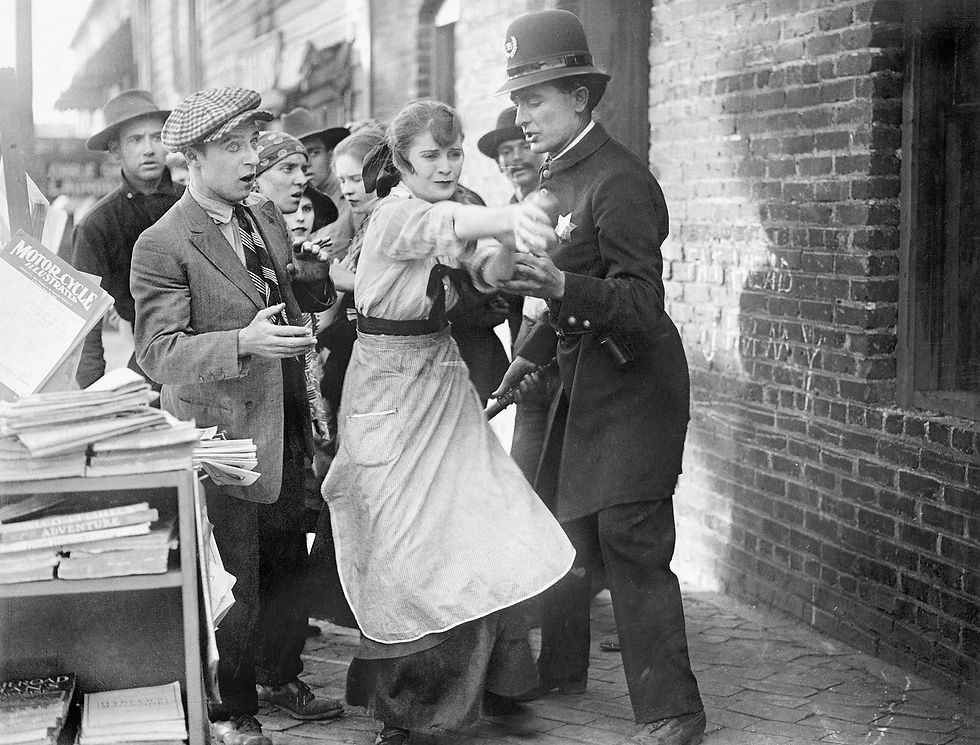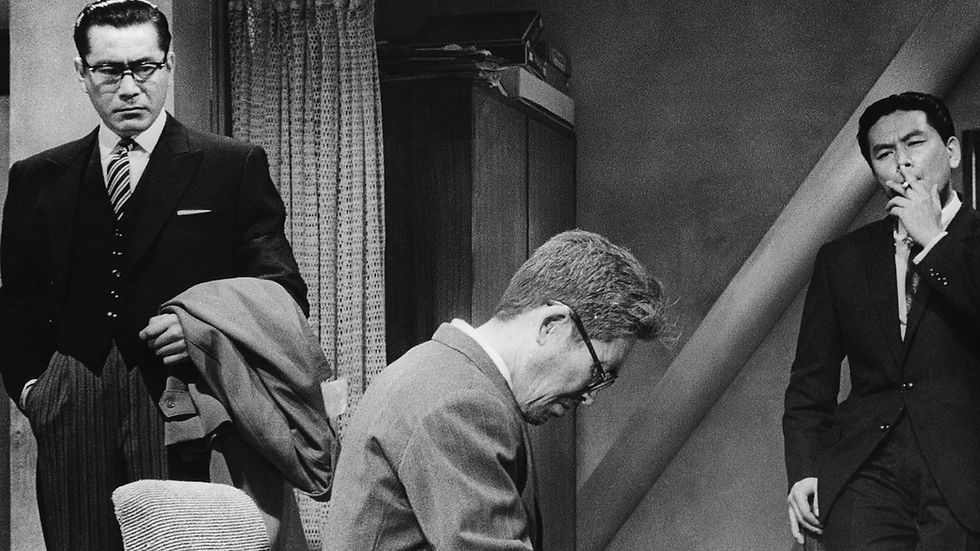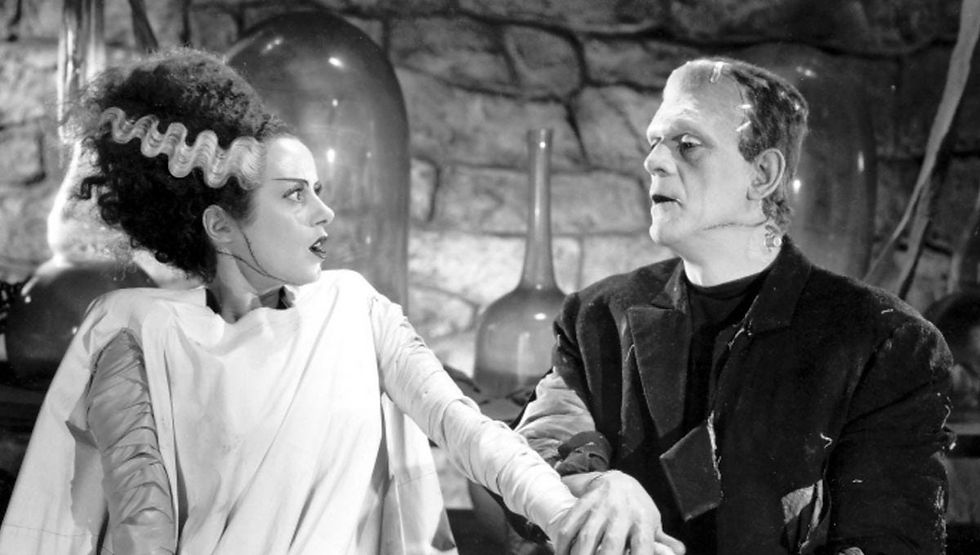Intolerance: Love's Struggle Throughout The Ages (1916) Review - Dylan McCully
- Dylan McCully
- Sep 21, 2023
- 5 min read
Updated: Sep 22, 2023
Written by Dylan McCully, 10/15/22
Dylan McCully's Cinema: https://www.imdb.com/list/ls521125877/

"Out of the cradle endlessly rocking."
I felt it fitting to watch this after Mishima: A Life In Four Chapters because this is also a crosscut narractice beween four different stories. It was experimental for 1985, but people weren't ready for this back in 1916. Armond White, famous contrarian critic, states this as the greatest film of all time. He also said Man of Steel was genius. He also said There Will Be Blood was awful. He also said Grown-Ups is the funniest movie of all time. I disagree with a lot of what he says, but I can see from a certain point of view how someone considers Intolerance as the G.O.A.T. It's an important and universal message that Griffith spreads, it's just that The Birth of a Nation spread the opposite message a year earlier and unfornuately was far more popular.
Each story is tinted in specific colors, just as Mishima's stories used their own palette. The first story we see after a short introduction and the Eternal Mother, played by Lillian Gish, rocking the eternal cradle is the 'modern' tale. (If you consider over a century ago modern.) You can already see the lavish set design with seemingly unlimited extras from the getgo, and I'm not even on the Babylon story yet. Basically, this girl (unnamed like most of the characters in the film) played by Mae Marsh is living it up as her dad works at a mill, and is friends with The Boy. Then a strike happens which moves all of our characters into a lower class city. The strike is not like the teacher's union, although if they did it with cannons it would likely be more effective. The Boy joins some sort of gang run by the Musketeer, but when the Dear One's father dies, he marries her and quits the gang. I really enjoy Mae Marsh's performance; she really brightens up the screen and when she is crying, you will feel for her. I mention this specifically because in a lot of silent films, the acting is too stage-derived and doesn't feel realistic enough for truely emotional moments. The Musketeer gets the Boy locked up in jail, and the Dear One is left to have a child on her own, which gets taken away. The Musketeer promises the Dear One to get it back. The Boy gets out of jail and when he is out of the house the Friendless One, the girlfriend of the Musketeer, takes a revolver and follows the Boy. At this time, the Dear One is in trouble because the Musketeer has her all alone. All the characters end up back with the Dear One, and I won't spoil it from there because that's when it gets exciting. Overall, this is the story with the most meat on it, and it considered the best out of the four. I would agree with this sentiment, although I would consider all four timeless.

I'll talk about each story separately although they are intersperced between each other in the film. The next one introduced is the story everyone knows: the crucifixion of Jesus. The set and costume design is again immaculate and reminds me of Life of Brian (but not as funny). In Jerusalem, the Pharisees are on top, and make every cease all activity when they pray. At the famous wedding of Cana, Jesus changes water into wine, so the story goes, before being confronted by the Pharisees. They test his morals, bringing him a woman who cheated on her husband, and ask him if she should be stoned. Jesus famously says "Let him without sin throw the first stone." which clears everyone out. Now, I don't want to spoil the story, but things don't turn out well for Jesus, until they do three days later. Religious or not, bible stories such as this are still applicable in modern society, especially in the social media era where everyone is extremely quick to judge.

The third story introduced takes place in 1500's France as religious wars were rampant. It opens with a majestic palace with royalty in the middle, and hundreds of extras surrounding them. Then we get actually camera movement as we go from a wide to a full, which I found impressive, especially for the time. We even see one of Griffith's new-fangled close-ups of a ladies face. How brash. Catherine and King Charles IX, Catholics, pretty much decide to kill all of these so-called Huguenots, who were protestants. The part of the story that resonates, though, is that of a beautiful girl credited as Brown Eyes and her soon to be husband, Prosper Latour. That's as far as I'll go as to not ruin the climax of the story, but you may be able to assume where it's going.

The fourth and final story is certainly the biggest in scope: the fall of Babylon. The establishing shot is absolutely breathtaking, well, every shot from this story is because of the monsterously huge set and extraordinary amount of extras. The effort put into replicating ancient Babylon is a tremendous one that will never be forgotten. Basically the story here is this Mountain Girl, played by Constance Talmadge, is put in a marriage market after independently refusing someone's advances. She refuses any husbands at the marriage market, saying she'll only marry soldier, but then is upset when no one wants to marry her. Gee, this movie really is timeless. I have no clue if the soundtrack in the version I am watching was originally composed for the film or if it was done later, but it is majestic. Mountain Girl shows interest in the young prince Balthazar, but he already has a favorite wife - Princess Beloved. The prince and princess both worship Ishtar, a rising god, and the High Priest of Bell is jealous of Ishtar's growing popularity. The Priest makes a secret deal with the Persian army to attack Babylon, which they do but fail at taking. The Mountain Girl follows the priest to a meeting with the leader of the Persian army, Cyrus, and hears of a treacherous, dare I say intolerant plan of attack. What happens next? Watch to find out, or read a history book.
None of the stories, acting, editing, cinematography, etc. feel dated in the least amount. The four climaxes that are intercut between each other (did George Lucas direct this? No, too competent) without title cards are all worthy of endless praise, but many others of a higher writing quality have extensively touched on the subject. Intolerance is not only one of the greatest films of all time, but one of the most important. I consider it the first true cinematic masterpiece. It's more powerful than anything released in theaters over the past few decades, and if everyone watched it, the world would be a better place. I'll send you off with a quote from Armond White:
"Thanks to Zack Snyder’s artistry, Man of Steel is The Godfather of superhero movies."
or this one:
"From the psychological precision of the acting to the eye-dazzling imagery of the legendary Babylon-court tableau, Intolerance personalizes political history, conflating it with love. Griffith used cinema to examine both history and love deeply, proposing that, in his view, they are undeniably inextricable. That is still the boldest of all political propositions. Try to find a contemporary politician or filmmaker who would dare." 10/10
D.W. Griffith Ranking:
Intolerance - 10/10






Comments